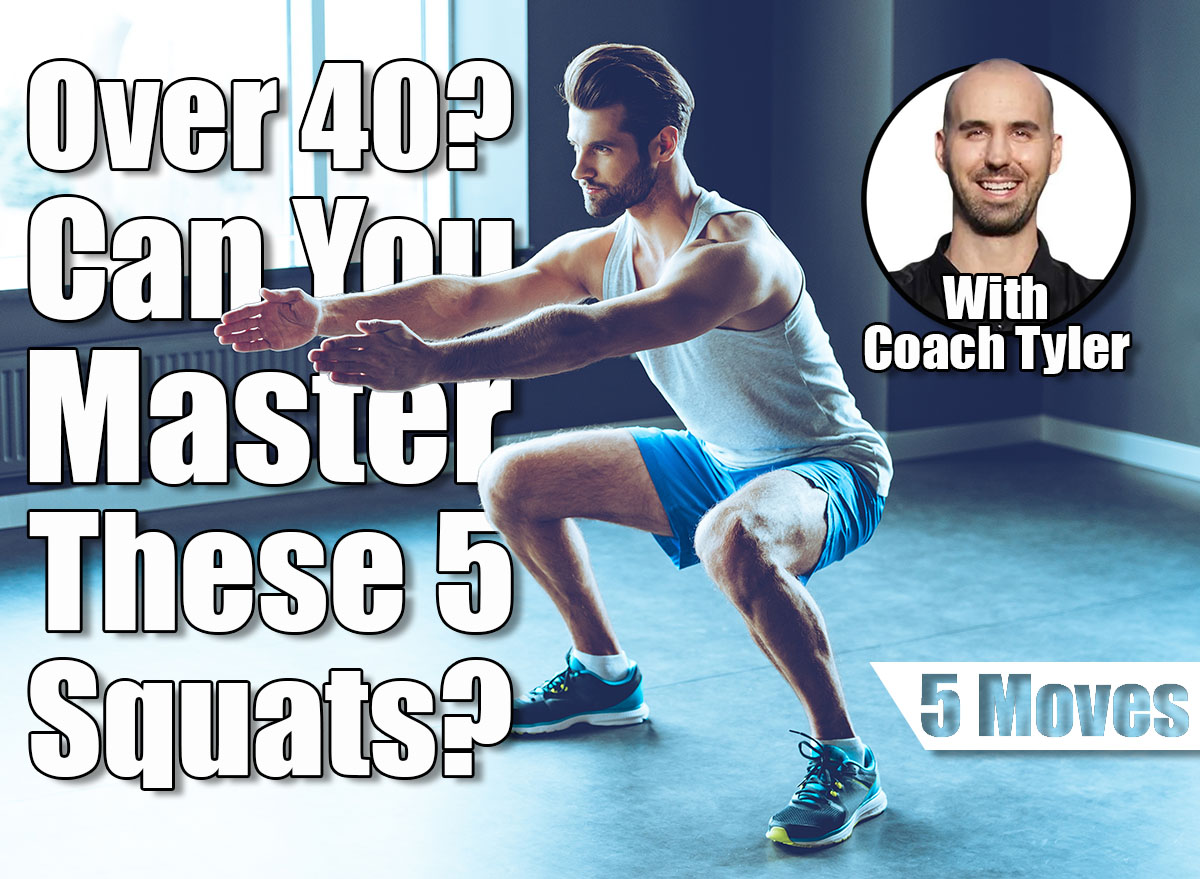Building strength after 40 doesn’t require pounding heavy weights; it demands moving with precision, control, and intent. Squats unlock lower-body power, core control, and real-world mobility all in one. But it’s not just about going up and down. It’s about how well your body handles tension, posture, and balance every step of the way.
As a coach, I’ve seen hundreds of people over 40 regain strength, stability, and confidence by mastering just a handful of squat variations. These five moves target the muscles that support your hips, knees, and spine without trashing your joints or sacrificing form. They challenge more than just your legs. They teach your entire body to stay strong, mobile, and pain-free through every rep.
You won’t need a barbell or a gym. All you need is your body, a little space, and a willingness to move with purpose. These squats don’t just build strength, they rebuild movement. And that’s what keeps you capable for decades to come.
5 Squats That Prove Your Strength After 40
Bodyweight Box Squat


The bodyweight box squat reinforces consistent perfect depth and posture. Sitting back to a box teaches hip-driven movement and takes pressure off your knees. It also builds confidence in the bottom of the squat, especially for those new to the pattern or returning from injury. Clean reps here lay the groundwork for every other squat you do.
How to do it:
- Stand in front of a box or bench with feet shoulder-width apart.
- Reach your hips back and lower until you touch the box lightly.
- Keep your chest tall and knees in line with your toes.
- Drive through your heels to stand tall and repeat for 8–12 reps.
Goblet Squat


Holding a dumbbell or kettlebell in front of your chest pulls your posture upright and engages your core. The goblet squat fires up your quads, glutes, and upper back while teaching clean, strong movement from head to toe. The added weight adds resistance without overloading your joints. It’s one of the safest and most effective ways to build leg strength at any age.
How to do it:
- Hold a dumbbell or kettlebell at chest height with elbows tucked in.
- Lower into a squat, keeping your elbows inside your knees.
- Stay tall through your chest and core as you drop to full depth.
- Drive through your feet to return to standing.
Split Squat


Split squats target the quads, glutes, and hips one leg at a time. Split squats also improve balance, coordination, and core control without needing heavy weights. A split squat highlights strength imbalances and builds stability in your knees and ankles. Perfect for functional strength that carries into climbing stairs, walking hills, and injury-free movement.
How to do it:
- Step one foot back into a staggered stance.
- Lower your back knee toward the floor with control.
- Keep your front knee tracking over your ankle and your chest tall.
- Push through your front foot to return to standing. Do 8–10 reps per side.
Wall-Facing Squat


This bodyweight-only squat forces clean alignment from top to bottom. Standing just inches from a wall forces you to maintain perfect posture, an upright chest, and full control through the hips and ankles. It exposes any mobility restrictions in your spine, hips, or shoulders. When you squat deep here without tipping forward, you’ve built real mobility and strength.
How to do it:
- Stand 6–8 inches from a wall, facing it with feet shoulder-width apart.
- Keep arms raised in front of you or overhead.
- Lower into a squat slowly, keeping your chest upright and back flat.
- Don’t let your knees or head touch the wall, control the movement through your hips.
Tempo Squat


Tempo training builds strength by increasing time under tension. Slowing the descent forces your muscles to stabilize and control every inch of the movement. It strengthens your mind-muscle connection and eliminates sloppy form. Each rep becomes a strength builder, not just a movement.
How to do it:
- Stand with feet shoulder-width apart and hands at your chest.
- Lower into a squat over a count of 3–5 seconds.
- Pause briefly at the bottom, then rise back up with control.
- Repeat for 6–8 reps, keeping tension the entire time.













Leave a Reply